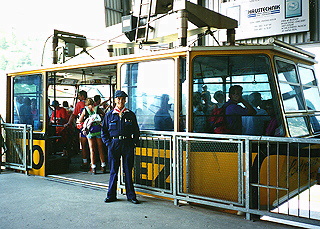 On the matter of learn how to floor the shields (hardwire to ground, or by a capacitor), and ground currents melting shields, I might like to offer my expertise with the care and feeding of ground loops in the shield protecting low- degree signals: use a resistor, not a capacitor. Understand that the short copper link we’re discussing (P802.3z clause 39) is meant to be used inside a wiring closet. These are the specifications that our IEEE 802.3z 1000BASE-CX copper cabling teams feels are crucial to satisfy FCC/VDE regulations. Should you check the specifications for the BERG MetaGig shielded connector, it beats this specification. The measure of shield connection efficacy for a high-velocity connector is called the bottom switch impedance, or shield transfer impedance, of the connector, and it is a vital parameter. That small an inductance can’t be applied in a leaded part, it must be a really low-inductance distributed capacitance, presumably implemented as a skinny gasket distributed all the way in which across the connector shell, insulating the connector shell from the chassis. It provides a direct metallic connection between chassis and shield that goes all the way in which around the connector pins, utterly enclosing the sign conductors.
On the matter of learn how to floor the shields (hardwire to ground, or by a capacitor), and ground currents melting shields, I might like to offer my expertise with the care and feeding of ground loops in the shield protecting low- degree signals: use a resistor, not a capacitor. Understand that the short copper link we’re discussing (P802.3z clause 39) is meant to be used inside a wiring closet. These are the specifications that our IEEE 802.3z 1000BASE-CX copper cabling teams feels are crucial to satisfy FCC/VDE regulations. Should you check the specifications for the BERG MetaGig shielded connector, it beats this specification. The measure of shield connection efficacy for a high-velocity connector is called the bottom switch impedance, or shield transfer impedance, of the connector, and it is a vital parameter. That small an inductance can’t be applied in a leaded part, it must be a really low-inductance distributed capacitance, presumably implemented as a skinny gasket distributed all the way in which across the connector shell, insulating the connector shell from the chassis. It provides a direct metallic connection between chassis and shield that goes all the way in which around the connector pins, utterly enclosing the sign conductors.
 Specifically, the voltage offset between chassis (green wire) grounds not often exceeds ten volts. I have measured 2.Four volts RMS at 240 Hz in an Air Traffic Control automation system, till the green and white grounds were disentangled. A method of stress management is controlling the distribution of dielectric stress. Uniform distribution of dielectric stress may be achieved in excessive voltage cables by surrounding the excessive stress areas of the high voltage cable with a tube of high permittivity material that makes contact at one end with a floor electrode contacting the shield of the excessive voltage cable. For any shield to work within the Gigabit Ethernet application, we will subsequently want a floor transfer impedance (that is the impedance between chassis and the shielded of the cable) less than about 0.1 ohms at 625 MHz. In low-speed functions involving excessive-impedance circuitry, where most of the near-field energy surrounding the conductors is within the electric field mode (as opposed to the magnetic field mode), shields want solely be grounded at one finish.
Specifically, the voltage offset between chassis (green wire) grounds not often exceeds ten volts. I have measured 2.Four volts RMS at 240 Hz in an Air Traffic Control automation system, till the green and white grounds were disentangled. A method of stress management is controlling the distribution of dielectric stress. Uniform distribution of dielectric stress may be achieved in excessive voltage cables by surrounding the excessive stress areas of the high voltage cable with a tube of high permittivity material that makes contact at one end with a floor electrode contacting the shield of the excessive voltage cable. For any shield to work within the Gigabit Ethernet application, we will subsequently want a floor transfer impedance (that is the impedance between chassis and the shielded of the cable) less than about 0.1 ohms at 625 MHz. In low-speed functions involving excessive-impedance circuitry, where most of the near-field energy surrounding the conductors is within the electric field mode (as opposed to the magnetic field mode), shields want solely be grounded at one finish.
In high-velocity purposes involving low-impedance circuitry, many of the close to-field energy surrounding the conductors is in the magnetic discipline mode, and for that problem, solely a magnetic shield will work. The twisted pair throughout the shield will nonetheless be protected from EMI etc, and an appropriate differential receiver will haven’t any issue dealing with the power frequency and harmonics 10-volt frequent-mode voltage. We use one pair for the transmit path, and another pair for the obtain direction. These approaches involve using shields that are capacitively- coupled to the chassis. See Henry Ott, Noise Reduction Techniques in Electronic Systems, 2nd ed., John Wiley & Sons, 1988.) There are shielding approaches that present a low ground transfer impedance at high frequencies, whereas at the same time offering a a lot higher impedance at 60 Hz. In the example you cite, the bottom switch impedance at one finish of the cable would be 100 ohms, rendering the shield ineffective. The impact might not be all that large, as a result of shields handle high-impedance noise sources, and one hundred ohms isn’t much compared to these impedances, except maybe at very excessive frequencies.
The a hundred ohm resistor could due to this fact be bypassed with a RF capacitor, which would be protected from ESD puncture by the 100-ohm resistor. I haven’t tried this for communications indicators, however my theory would be that the receiver end should be arduous grounded, because it is the receiver that handles the bottom-stage signal, and a zero-ohm ground is better than a 100-ohm floor. Which end needs to be hard grounded, and which ought to have the series resistor? If one places a hundred-ohm one-watt carbon resistor in sequence with the shield at either end, with the opposite finish directly grounded to the chassis, the ground present will probably be limited to 0.1 amp, well within the talents of the shield to hold. Joe, I’m going to disagree with your suggestion that a shield with a resistor at one finish acts as an effective EMI shield. In this case the shield acts as a Faraday cage surrounding the conductors, stop the egress (or ingress) of electric fields. Grounding both ends of the shield permits high-frequency currents to circulate in the shield, which will counteract the currents flowing in the signal conductors. For the magnetic shield to function correctly, we should present means for current to enter (or exit) at each ends of the cable.
To see more info in regards to shield control cable look into the webpage.